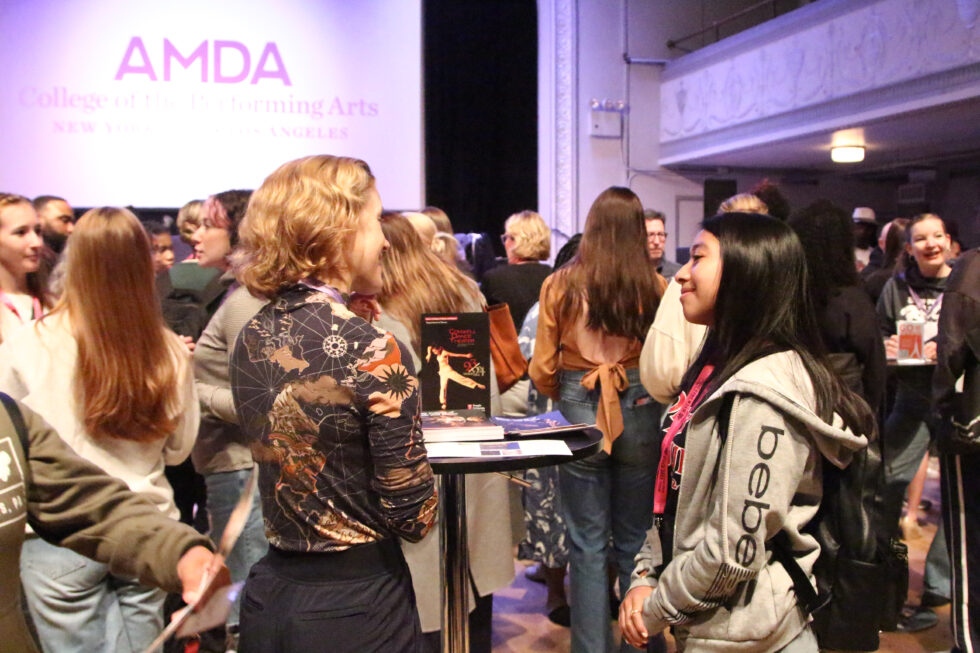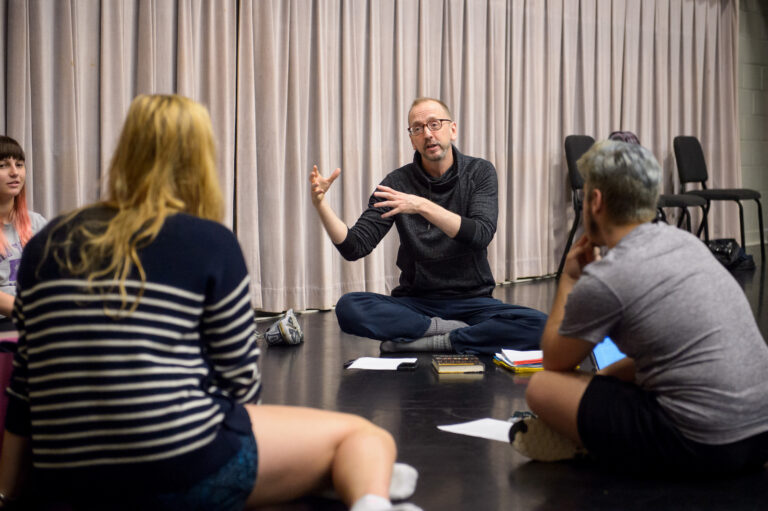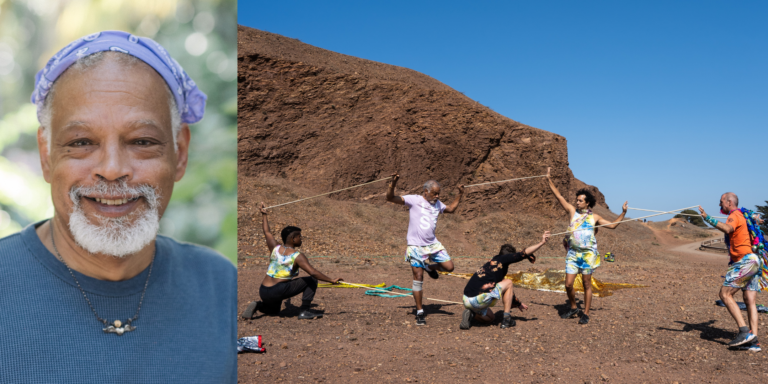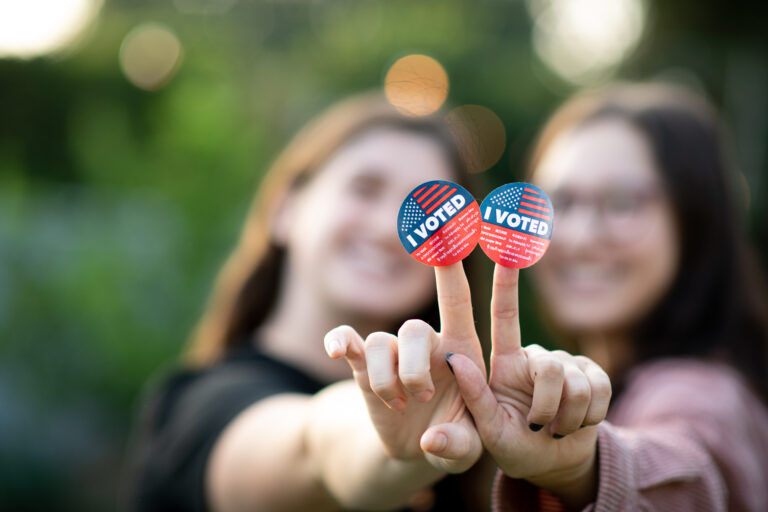
Last fall, Chauna Sumpter and her daughter Carrington Hope Mason—then a high school senior—flew from Southern California to New York City to attend Dancewave Through College and Beyond. Over the course of a few days, Mason took college-level master classes, attended an audition, and spoke with faculty members and representatives of dozens of university dance programs. After the weekend, Mason received messages from 11 schools, urging her to apply. “The experience put schools on her list that she thought were out of her league,” says Sumpter. “It boosted her confidence.”
DTCB, part of the Brooklyn-based dance education organization Dancewave, is designed to make the labor-intensive, challenging process of applying to college dance programs as accessible as possible to a wide range of students. The program reduces some of the obstacles that make the college admissions process so stressful—and costly—for high schoolers and their families by directly connecting students with a number of college dance programs. For Mason, preparing to start as a freshman at Chapman University this fall, Dancewave helped to make the application process more personal. “My daughter didn’t get lost there,” says Sumpter of DTCB. “She felt seen.”
The DTCB Experience
DTCB started 15 years ago as a small, in-person event for members of Dancewave’s student company. Over the years, it greatly expanded in scope: Last year DTCB welcomed 300 students and 45 colleges. The event now has both virtual and hybrid and in-person options over two weekends (this year’s session runs virtually September 28–29, and then hybrid and in-person in New York City October 4–6). “DTCB allows people to audition for many programs, without having to spend thousands and thousands of dollars on travel,” says Shannon Corenthin, Dancewave’s special-events producer. “For less than $200, you get so much information to make an informed decision about higher education.”
A month before the event, students and their parents are given access to an app that allows them to explore the colleges attending and to send messages to representatives either publicly or privately. The app also includes discussion boards, where students can post and confer about topics like financial aid applications and their favorite dance styles.
At its annual event, DTCB programming includes informational sessions on topics ranging from financial aid to auditions to college-essay writing; a virtual college fair, which Corenthin refers to as “college speed-dating”; master classes taught by college faculty members; and a networking event, where students and parents mingle with college representatives and have the chance to make face-to-face connections. “We have food, and music playing in the background,” says Corenthin. “We remove the barriers that make college tabling events feel stuffy and impersonal.”
The weekend wraps up with an optional audition. Participants, who are sent the choreography two weeks in advance, perform in groups for a panel of colleges. DTCB welcomes schools of all kinds, ranging from those that offer BA and BFA programs to those that have strong nondegree dance programs. As a result, each school regards the audition a bit differently. “Some count DTCB auditions as their audition, some use DTCB as a prescreen, some schools will invite students to their audition after DTCB, and some will also require students to audition at their program,” explains Corenthin.
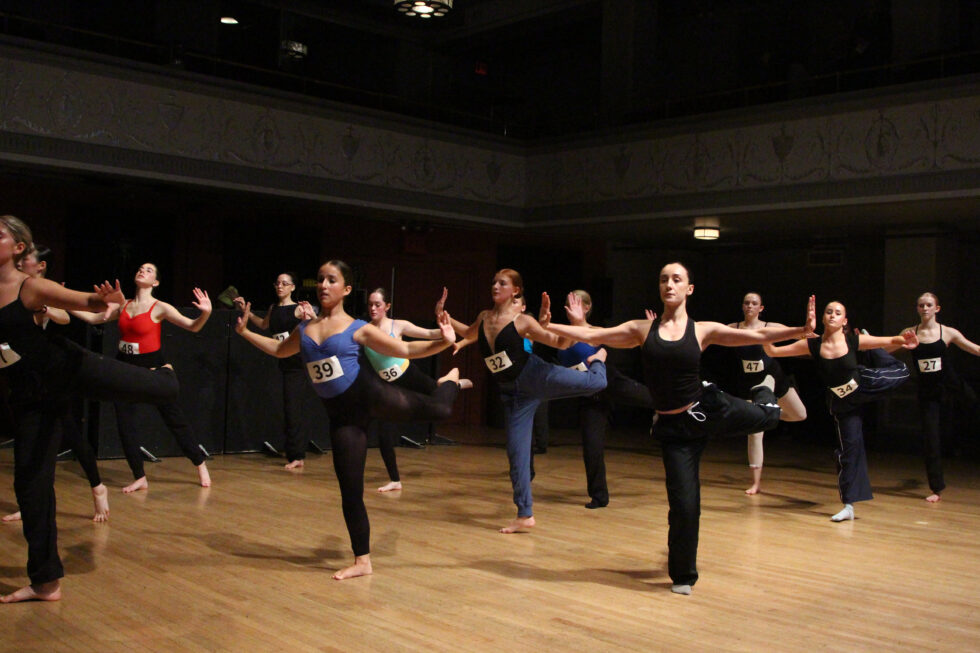
Expanding West
This year DTCB is expanding to the West Coast, with a new program called Prepare—Summer Session, at Cornish College of the Arts in Seattle August 3–4. Prepare will be a smaller version of the New York City program, sans virtual option and informational sessions.
Although the program is open to high school dancers from anywhere, Sharron Starling, Cornish’s director of admissions, believes it will mostly be attended by West Coast–based dancers. Starling hopes that the summer dates will be a boon for participants fresh off of summer intensives, or those for whom taking a weekend away from their home studios in the fall, in the midst of Nutcracker rehearsals or competitions, can prove challenging.
“When dancers are applying to college, they have a very unique pathway that their high school counselors don’t understand, and their dance teachers might not understand,” says Starling, who adds that many high school dancers think there are only two options available to them after graduation: Join a company or quit dancing. Programs like DTCB, she says, show them the range of ways that dance can fit into their lives in college, without requiring them to fly to a different city every weekend. “If you’re interested in a school in California and you’re in Virginia, and you don’t have the possibility to travel for various reasons, you lose that opportunity,” adds Corenthin. “But with DTCB, you don’t miss out on that.”
